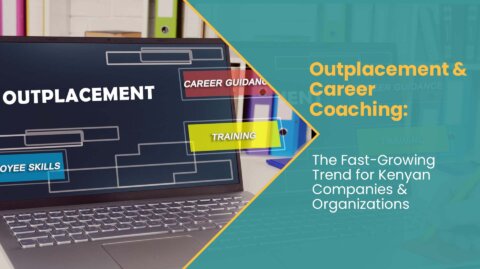1. Introduction
I am Matilda Zainab Kamara, a highly skilled Taxpayer Services/Clients Engagement, Education and Business Registration Policy Professional in tax administration, with over 14 years of working experience gained through working with the Sierra Leone National Revenue Authority (NRA). I am also a Certified Change Management Practitioner with notches in MPhil in taxation and a Master’s in Business Administration.
2. Understanding the Change: What was the change initiative? What was the project you were involved in? What were the main reasons behind it? How did it impact your role and the organisation?
I have been part of the strategic government reforms in tax administration since the set-up of the Goods and Services Tax (GST) Department in 2009, and one of the reasons for this action by the government is to Combine seven (7) outdated taxes into a single goods and services tax that was easier for taxpayers to understand and for the government to collect.
I was part of the first batch of young graduates recruited in this department. As taxpayer services staff and tax education, I was part of the dynamic team to educate the stakeholders and the general populace to be aware of the reform taking place. The Taxpayer Identification Number (TIN) was the first reform that started immediately during the implementation of the Goods and Services Tax, ensuring that the National Revenue Authority (NRA) captures accurate and up-to-date information on all registered taxpayers/clients, as a crucial step in promoting tax compliance. After the TIN system was implemented, a system was set up called VAT Information Processing System (VIPS) that aided in collecting GST revenue coming into the government revenue coffer and this was implemented with the help of Crown Agents. Later, the Income Tax Department and Goods and Services Tax Department were merged and it was called the Domestic Tax Department, and the Domestic Tax Information System (DTIS) emerged for both the GST and Income system to work together.
As these three systems were fragmented and they do not share information, (DTIS, TIN and VIPS). The authority brought together these different tax-related functions into one basket to standardised the system to improve service delivery to excess information, registration, declaration of taxes, payment and accurate reporting etc. through the implementation of an Integrated Tax Administration System (ITAS)
As a manager for Taxpayer Services/client engagement, I was part of a vibrant team that addresses tax education and stakeholder engagement, facilitating the Domestic Tax Department’s internal training and national on tax content and one of the change agents on the reforms; Taxpayer Identification Number (TIN), Goods and Services Tax (GST), Integrated Tax Administration System (ITAS) and Electronic Cash Register (ECR) etc.
3. The Approach:
How did you approach managing and implementing the change? What strategies or methodologies did you use? Were there any specific change management frameworks or models you followed?
Managing and implementing change at the Domestic Tax Department in Sierra Leone National Revenue Authority required a thoughtful and strategic approach. Here are the steps taken:
Assess the current situation: We began by thoroughly understanding the current state of the Domestic Tax Department. Identify the strengths, weaknesses, opportunities, and threats that exist within the department. This helped determine the areas that required change and improvement. Set clear objectives; define the specific goals and objectives that need to be achieved through the change process. These objectives should be aligned with the overall mission and vision of the Sierra Leone National Revenue Authority.
We developed a change management plan: Created a detailed plan that outlined the steps, timeline, and resources required to implement the desired changes. This plan also included strategies for effectively communicating and involving stakeholders throughout the process.
We designed a Communication and Engagement stakeholders’ strategic paper: It was crucial to communicate the need for change and involve key stakeholders in the decision-making process. Reasons behind the change and the benefits it will bring.
Provide training and support: Offer training programs and resources to staff to help them adapt to the changes. This includes workshops, seminars, one-on-one coaching sessions etc. Additionally, provide ongoing support to address any concerns or challenges that arise during the transition.
Monitor progress and make adjustments: Regularly monitor the progress of the change implementation and evaluate its effectiveness. This continues to allow for adjustments to be made, if necessary, into the ITAS ensuring that the desired outcomes are achieved.
There are the methodologies/strategies that have been utilised through the tax education team and with the support of the Change Management Practitioner employed brought in by the ITAS supplier as a Change Management Lead. These various change management frameworks and models were used, including the ADKAR model framework. This model focuses on five key elements: Awareness, Desire, Knowledge, Ability, and Reinforcement. It provides a structured approach to help individuals and organisations navigate through change. Also, Lewin’s Change Management Model is considered based on the specific needs and context of the Domestic Tax Department and, the National Revenue Authority.
Why I am a Change Management Practitioner.
I read about change management on Prosci® ‘s LinkedIn page and how change management is tailored to projected management and with the influence of the change management lead at the NRA. After having the basics of change management, I realised that the taxpayer’s education/ client engagement and staff engagement during the implementation of these systems was how the internal and external factors accepted the change. I realised that my job was a change-maker. Lots of reforms are going on at the NRA, and I thought it fit that I should enrol for the Change Management Practitioner programme. I enrolled on the Prosci® Change Management Certification program to invest myself in the essential skills to support project implementation and overcome challenges allied with staff and the general populace of the side of change.
4. Challenges: What were the major challenges you faced during the change process? How did you address them?
Revenue collection is the main objective of the NRA and one of the trials we faced at the start of the process was getting the required support from the Project Owners (Board members and senior management) as they chased revenue to the detriment of the project implementation. We did have several meetings and seminars to accept the idea and the reasons for implementing the project. Before the implementation of ITAS, we had tax technology transformation schemes within the Authority that were not fully effectual, so people were not sure about the successful implementation of the ITAS because of ineffective tax technology. So, we are to change the attitude of the internal stakeholders through a change management course.
5. What were the Key Success Factors that contributed to the success of the change initiative at the Sierra Leone National Revenue Authority (NRA)?
The key factor that contributed to the success of the change initiative is that the communication strategic plan is implemented effectively through taxpayers and general public engagement, and stakeholder meetings, and it is a continuous process which is essential in managing change. During the COVID-19, it was running through virtual meetings, social media, TV and radio discussions. This includes clearly articulating the reasons for change, and the expected outcomes, and addressing any concerns or questions from employees. NRA emphasised transparent and consistent communication throughout the change process. We visited our station and provincial office for education on the changes including taxpayers nationwide. Also, the change agent leads and the continued monitoring of the ITAS system helped to evaluate the system to track the progress of the change initiative to be successfully implemented. from the above document please look back at the change initiative, what were the most significant lessons learnt? what advice or inside would give to a person embarking on a similar journey
6. Key Lessons Learned:
The lessons gleaned from my experience with the ADKAR methodology and framework underscore the significance of project ownership and control. It is imperative for the project owner to actively participate in various stages, beginning with the development of requirements, specifications, and technical proposals, extending through supplier selection, and culminating in project implementation. The initiation of Change Management from the project’s outset is crucial, and the presence of a robust and dedicated project management team is essential.
Furthermore, the following were part of the lessons learnt:
Effective Communication is Paramount: One of the most significant lessons learned from this change initiative is the crucial role of effective communication. Transparent and consistent communication with stakeholders, including taxpayers, employees, and senior management, played a pivotal role in gaining support and understanding for the change. Whether through in-person meetings, virtual sessions, or various media channels, the continuous effort to articulate the reasons for change and the expected outcomes contributed significantly to the success.
Change Management is Essential: The introduction of a Change Management Practitioner, the utilization of change management frameworks like ADKAR and Lewin’s Change Management Model, and the investment in a Change Management Certification program proved to be essential. Recognizing the need for change management skills in navigating internal and external factors during implementation was a valuable insight. The emphasis on addressing not just the technical aspects but also the human side of change was critical.
Stakeholder Engagement is Continuous: The change initiative involved continuous stakeholder engagement, including taxpayers and employees at different levels. It was essential to not only communicate the changes but also actively involve stakeholders in decision-making processes. The success was not just about implementing technology but about ensuring that those affected were part of the journey and had a clear understanding of the benefits and reasons behind the changes.
Adaptability and Flexibility: The journey involved merging different tax-related functions, implementing various systems, and addressing challenges along the way. The ability to adapt to unforeseen circumstances, learn from mistakes, and make adjustments to the plan as needed was crucial. Flexibility in approach and an openness to refining strategies based on real-time feedback contributed to the success of the change initiative.
Addressing Resistance Early: Resistance to change is inevitable, and addressing it early is key. The challenges faced in gaining support from Project Owners initially highlighted the importance of addressing resistance at the leadership level. Conducting seminars and meetings to ensure understanding and support from senior management played a vital role in overcoming this challenge.
The following are my advice for Those Embarking on a Similar Journey:
Invest in Change Management Skills: Recognize the importance of change management skills and invest in training for yourself and key team members. The ability to navigate the human side of change is as critical as the technical aspects.
Create a Robust Communication Plan: Develop a comprehensive communication plan that addresses both internal and external stakeholders. Clearly articulate the reasons for change, expected outcomes, and how individuals and the organization will benefit.
Involve Stakeholders Actively: Actively involve stakeholders in decision-making processes. Their insights and understanding of the changes are crucial for success. Continuous engagement builds a sense of ownership and commitment.
Monitor Progress Closely: Implement mechanisms for monitoring and evaluating the progress of the change initiative regularly. This allows for timely adjustments and ensures that the desired outcomes are being achieved.
Anticipate and Address Resistance: Anticipate resistance and address it proactively. Whether it’s at the leadership level or among employees, having strategies in place to address resistance can prevent roadblocks to the change initiative.
Learn from Previous Initiatives: Reflect on past initiatives, both successful and unsuccessful. Understand what worked well and what didn’t, and incorporate those lessons into the planning and execution of the current change initiative.
Celebrate Milestones: Recognize and celebrate milestones along the way. Acknowledging achievements, whether big or small, boosts morale and reinforces the positive aspects of the change.
Conclusion
We must recognise that change is not a one-time event but a perpetual process that is fundamental to the sustained success of any initiative. It requires a dynamic mind-set that values learning from experiences, adapting strategies based on evolving circumstances, and consistently engaging stakeholders throughout the journey.
In essence, acknowledging the fluid nature of change enables organisations to stay responsive to emerging challenges and opportunities. Cultivating a culture of continuous learning ensures that the initiative remains relevant and effective, while the ability to adapt allows for flexibility in response to shifting circumstances. Moreover, active stakeholder engagement serves as a linchpin in fostering a collaborative environment, ensuring that diverse perspectives are considered, and key stakeholders remain invested in the success of the initiative.
Finally, a forward-thinking, adaptable, and stakeholder-engaged approach is crucial for navigating the ever-evolving landscape of change, ultimately contributing to the enduring success of the initiative.

















0 Comments